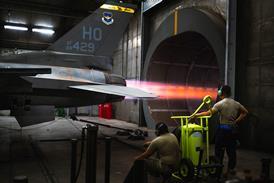Integrated avionics software under development for the Royal Australian Navy's 11 Kaman SH-2G(A) Super Seasprite helicopters is to be transferred to Australian Technology Information, Comptek Federal Systems and CSC, under a deal being finalised with Litton.
The deal, expected to be completed around the end of the month, follows mediation in late January after Litton last year sought to recoup $15 million in additional programme costs. Kaman says that an "amicable agreement" has been reached, with Litton still providing avionics hardware.
Details of a revised delivery schedule for the Integrated Tactical Avionics Suite (ITAS) are to be finalised early next month.
The problems faced by Litton have already delayed the final acceptance date for the first of the Kaman helicopters in the A$952 million ($500 million) deal until at least the early months of 2004, around 18 months later than originally scheduled.
The US helicopter manufacturer delivered the first baseline aircraft, which is fitted with what Australian Defence Department acquisition officials have described as only a "rudimentary-level" avionics system, earlier this month.
The first aircraft is due to be followed by two others by the end of March. All three helicopters will undergo further systems integration and testing, with operational evaluation trials commencing mid-year.
Kaman has carried out the first live firing of a new Raytheon AGM-65 Maverick missile variant using a Royal New Zealand Navy Super Seasprite SH-2G (NZ). The company says that the weapon - designated AGM-65D(NZ) - incorporates new autopilot algorithms developed by Kaman and Raytheon Electronic Systems with these designed to support an "extended range requirement". The Royal New Zealand Navy is scheduled to receive its firstSH-2G(NZ) in the next two months and has five helicopters on order.Source: Flight International




















